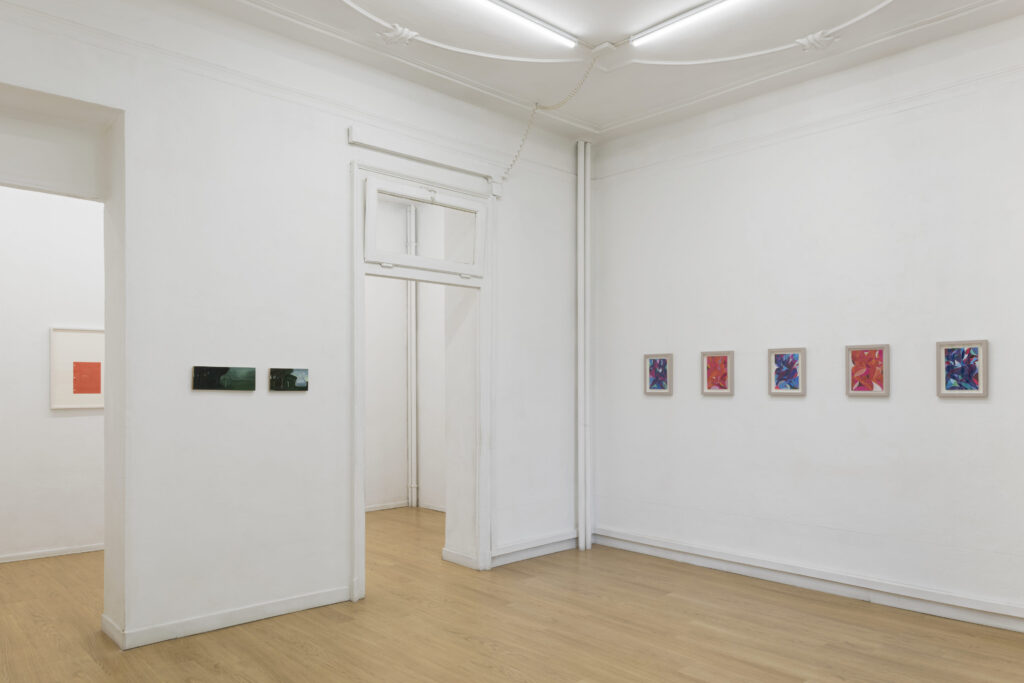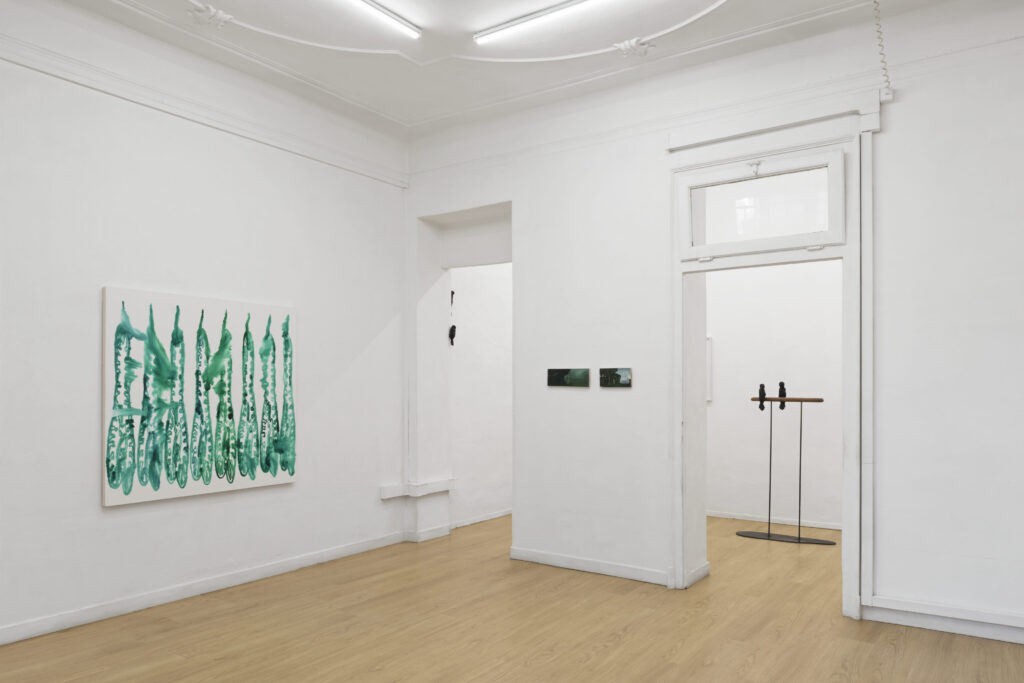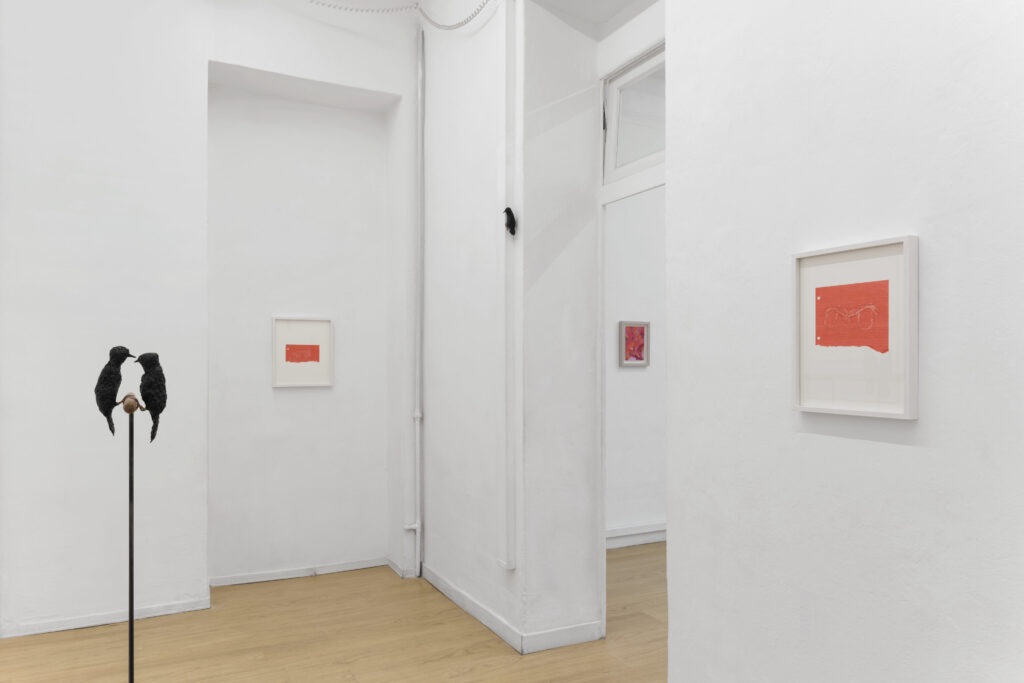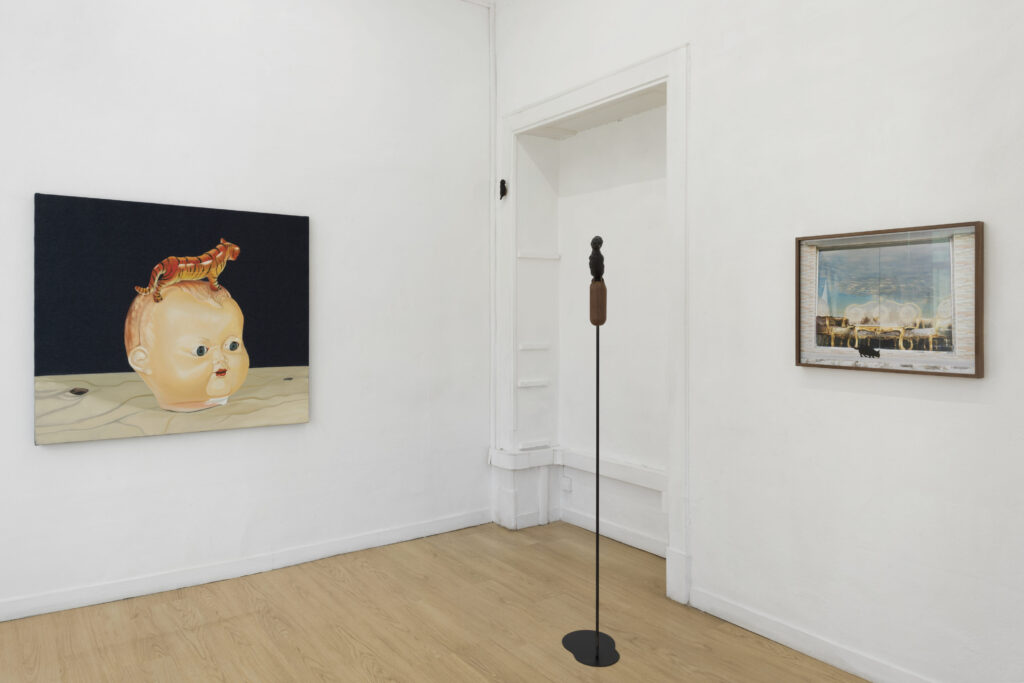Text by Samantha Ozer
To dream a man brings together a group of artists whose works consider dreams and myths as tools to understand ourselves and our relationships with other beings, both human and non-human. The exhibition borrows its title from Jorge Luis Borges’ short story “The Circular Ruins,” in which a “wizard” retreats into a temple to “dream a man” into existence, only to realize that he is also a product of someone else’s dream. Like the “wizard” who is visited by the god of Fire in many bestial forms, the artists in this exhibition look to animals and mystical spirits to bridge the gap between interiority and exteriority, explore myth-making for survival and consider how perspective dictates narrative. From the quotidian to the supernatural, the stories crafted through these mythical beings flirt with the bounds of fear and desire and present a projection of reality that is fluid depending on the environment or cultural conditions.
The intersection between imagination and sensorium influences lived experience. Elizabeth Jaeger’s birds surveil visi- tors, meeting us with expressions of sadness, curiosity, and even judgement, seemingly considering our habits as much as we envision theirs. For Dalton Gata, however, we are met with an unrequited gaze, rejected by person and animal alike, only instigating more questions about this surreal pairing. Rit (...)
Text by Samantha Ozer
To dream a man brings together a group of artists whose works consider dreams and myths as tools to understand ourselves and our relationships with other beings, both human and non-human. The exhibition borrows its title from Jorge Luis Borges’ short story “The Circular Ruins,” in which a “wizard” retreats into a temple to “dream a man” into existence, only to realize that he is also a product of someone else’s dream. Like the “wizard” who is visited by the god of Fire in many bestial forms, the artists in this exhibition look to animals and mystical spirits to bridge the gap between interiority and exteriority, explore myth-making for survival and consider how perspective dictates narrative. From the quotidian to the supernatural, the stories crafted through these mythical beings flirt with the bounds of fear and desire and present a projection of reality that is fluid depending on the environment or cultural conditions.
The intersection between imagination and sensorium influences lived experience. Elizabeth Jaeger’s birds surveil visi- tors, meeting us with expressions of sadness, curiosity, and even judgement, seemingly considering our habits as much as we envision theirs. For Dalton Gata, however, we are met with an unrequited gaze, rejected by person and animal alike, only instigating more questions about this surreal pairing. Rituals of consumption and sight are explored in Brook Hsu’s Cell Death 8, in which mushrooms and packs of what the artist calls bunny-dogs multiply inside of undulating pears. While these objects are suspended in space, her landscape paintings feature lush environments animated by a haunting absence. There is a feeling that something has recently departed or a premonition that it is yet to arrive.
In Tunji Adeniyi-Jones’ drawings, the chorus of androgynous figures move and whisper amongst themselves, recrea- ting tribal performance and connecting to a rich history of the Yoruba diaspora and wider mythologies of West African Kingdoms. More broadly, Farah Al Qasimi’s work explores issues of hybridity in creating cultural identity. Much like the multicultural production of the items in the furniture shop in Shahama, Abu Dhabi, legends surrounding black cats shift from misfortune to prosperity and luck depending on the cultural context. While individually, Fin Simonetti’s drawings suggest uncanny encounters with pastoral living; taken collectively, the works consider internalized guilt of how we treat other species, in this instance the cow, which is revered in some cultures and exploited in others. For Simonetti’s work specifically, but to be considered across all the works is a consideration of if the interior of one’s mind is safe from the judgement of a moralizing gaze, particularly one that is our own? If reality is constructed from our perceptions, then the conditions of the physical world are always in flux and dependent upon a patchwork of collective visions.
Photo: Marco Davolio
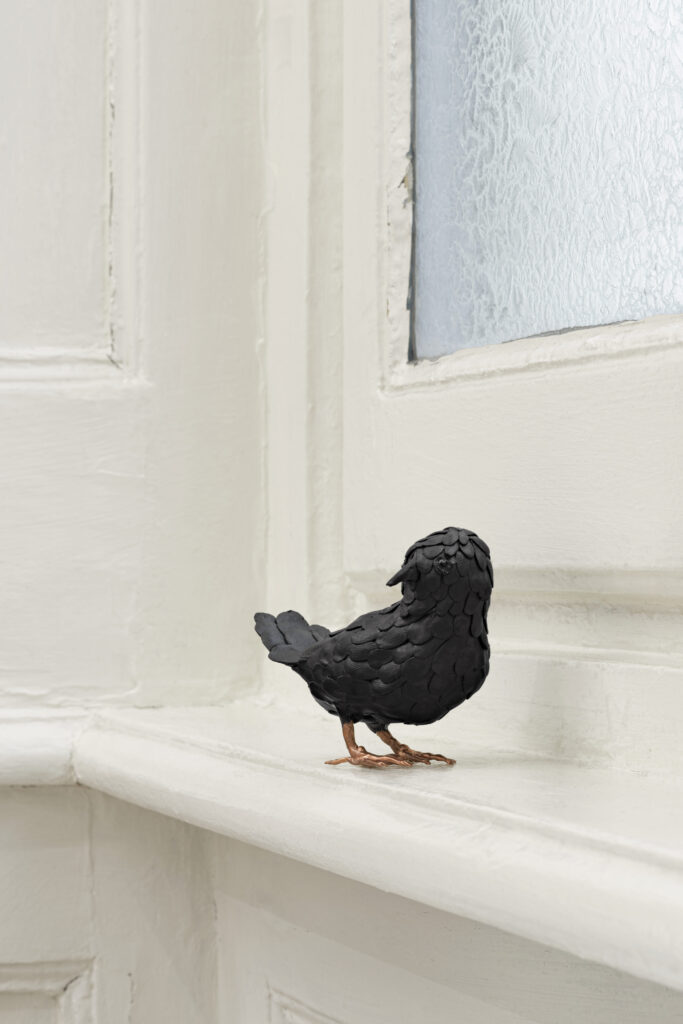 Elizabeth JaegerBird, 2020
Elizabeth JaegerBird, 2020
Ceramic, copper, epoxy clay
9 x 10 x 6,5cm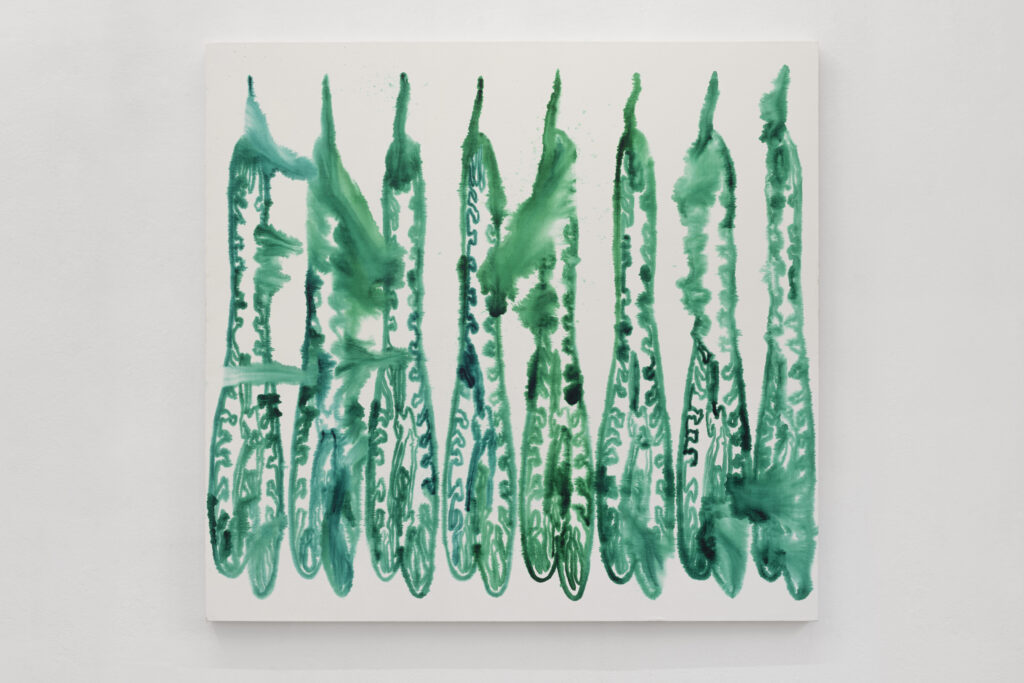 Brook HsuCell Death 8, 2018
Brook HsuCell Death 8, 2018
Ink on canvas
139x132cm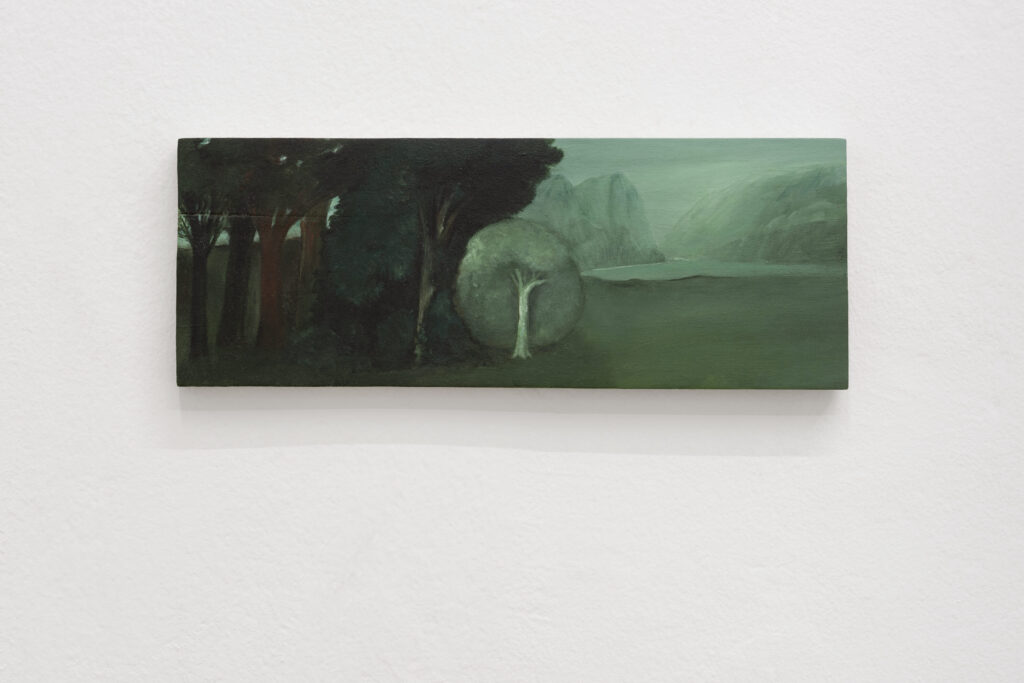 Brook HsuTree in a landscape 2 ,2020
Brook HsuTree in a landscape 2 ,2020
Oil on wood
15x35,5cm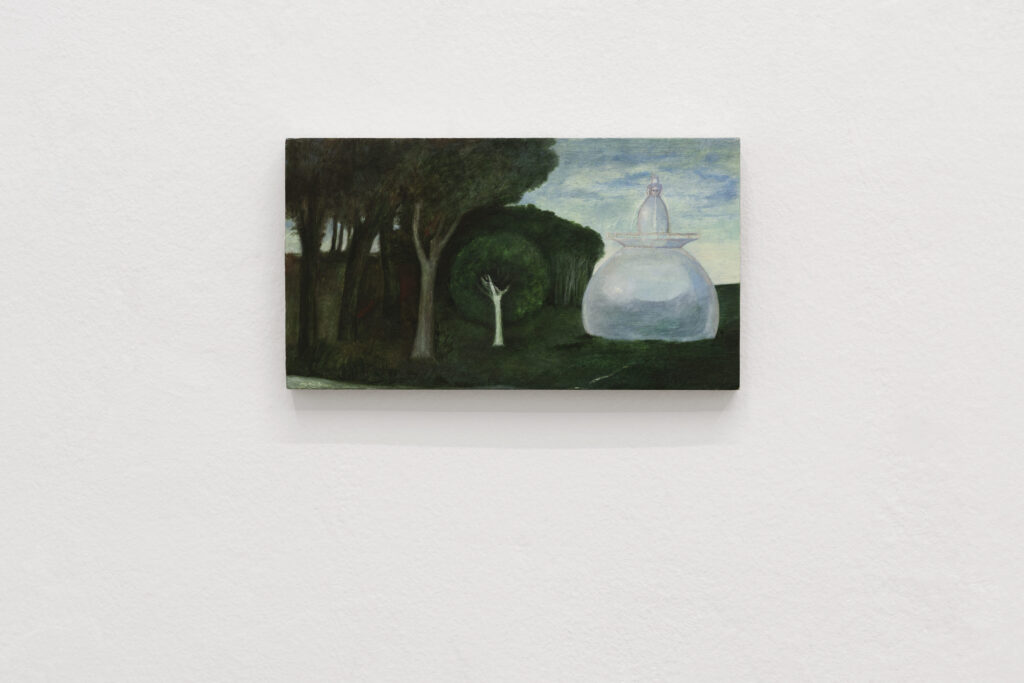 Brook HsuTree in a landscape 3 ,2020
Brook HsuTree in a landscape 3 ,2020
Oil on wood
15x25,5cm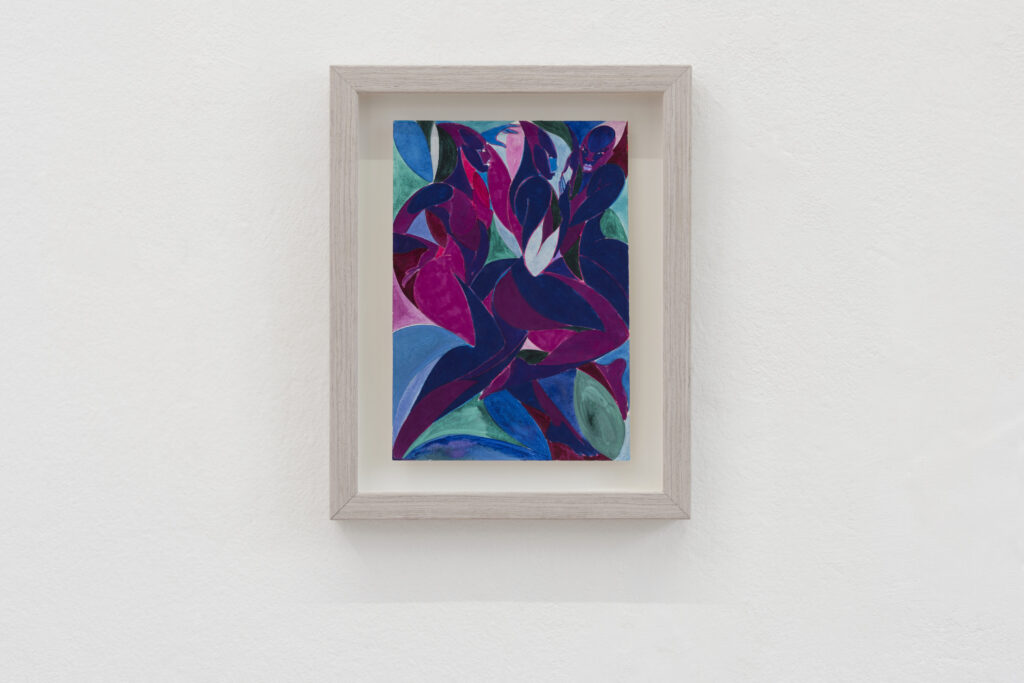 Tunji Adeniyi-JonesFigure Study 5, 2020
Tunji Adeniyi-JonesFigure Study 5, 2020
Watercolor and ink on paper
17,8 x 25,4cm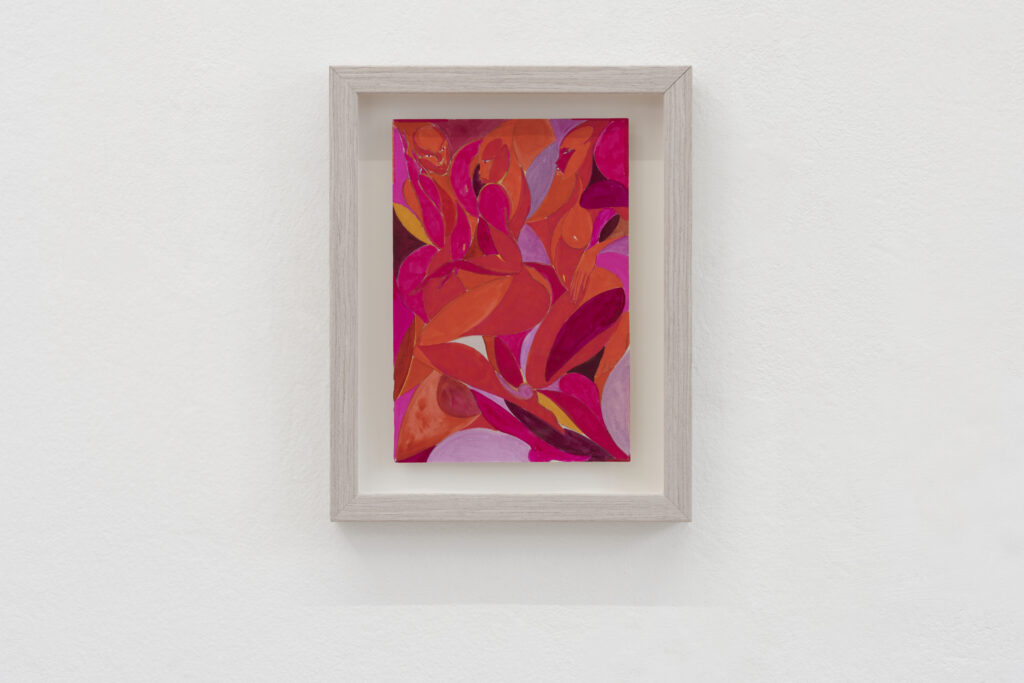 Tunji Adeniyi-JonesFigure Study 4, 2020 Watercolor and ink on paper
Tunji Adeniyi-JonesFigure Study 4, 2020 Watercolor and ink on paper
17,8 x 25,4cm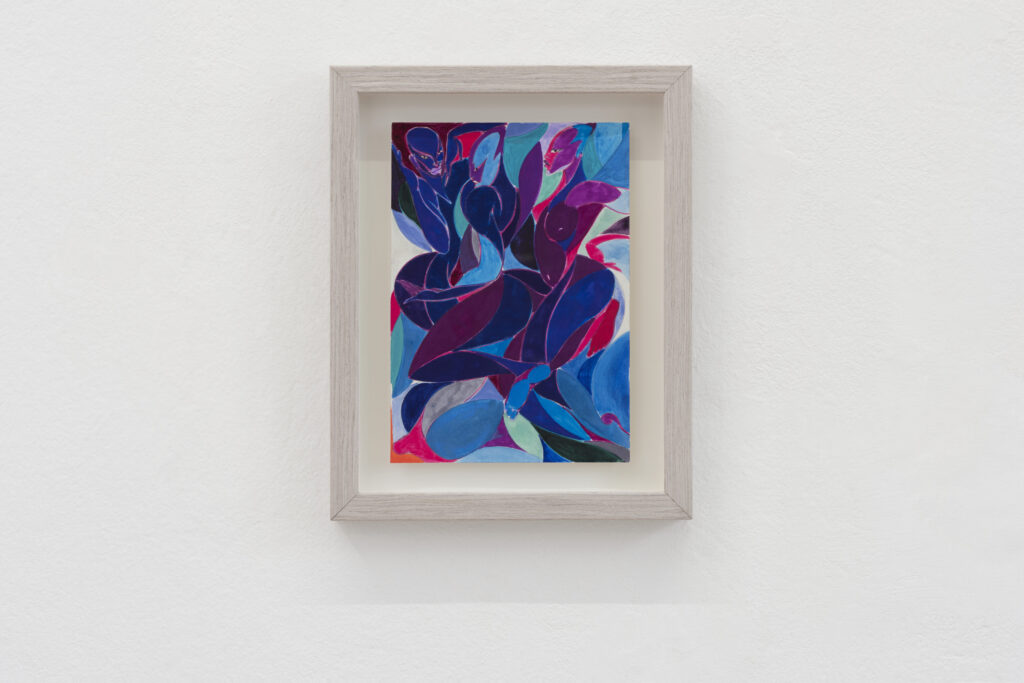 Tunji Adeniyi-JonesFigure Study 3, 2020
Tunji Adeniyi-JonesFigure Study 3, 2020
Watercolor and ink on paper
17,8 x 25,4cm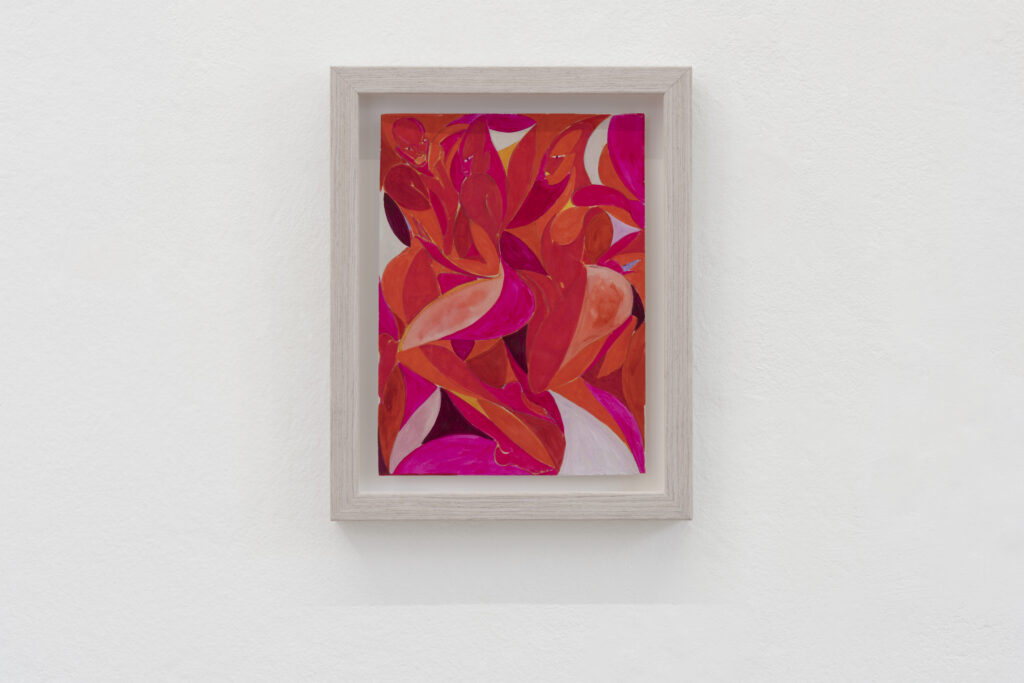 Tunji Adeniyi-JonesFigure Study 2, 2020 Watercolor and ink on paper
Tunji Adeniyi-JonesFigure Study 2, 2020 Watercolor and ink on paper
19 x 26,7cm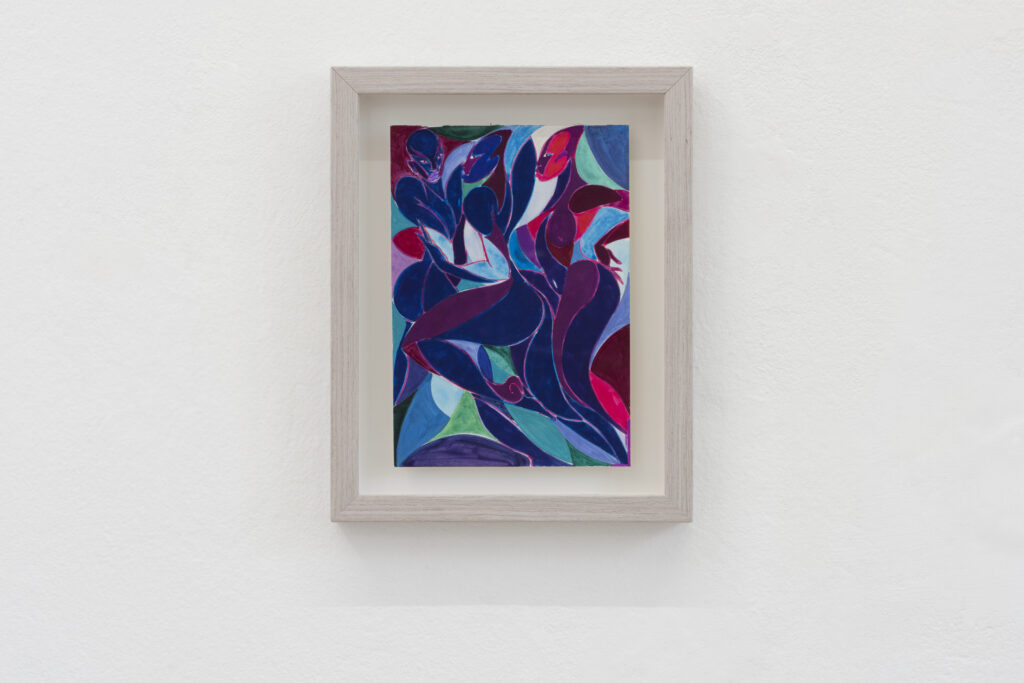 Tunji Adeniyi-JonesFigure Study 1, 2020
Tunji Adeniyi-JonesFigure Study 1, 2020
Watercolor and ink on paper
17,8 x 25,4cm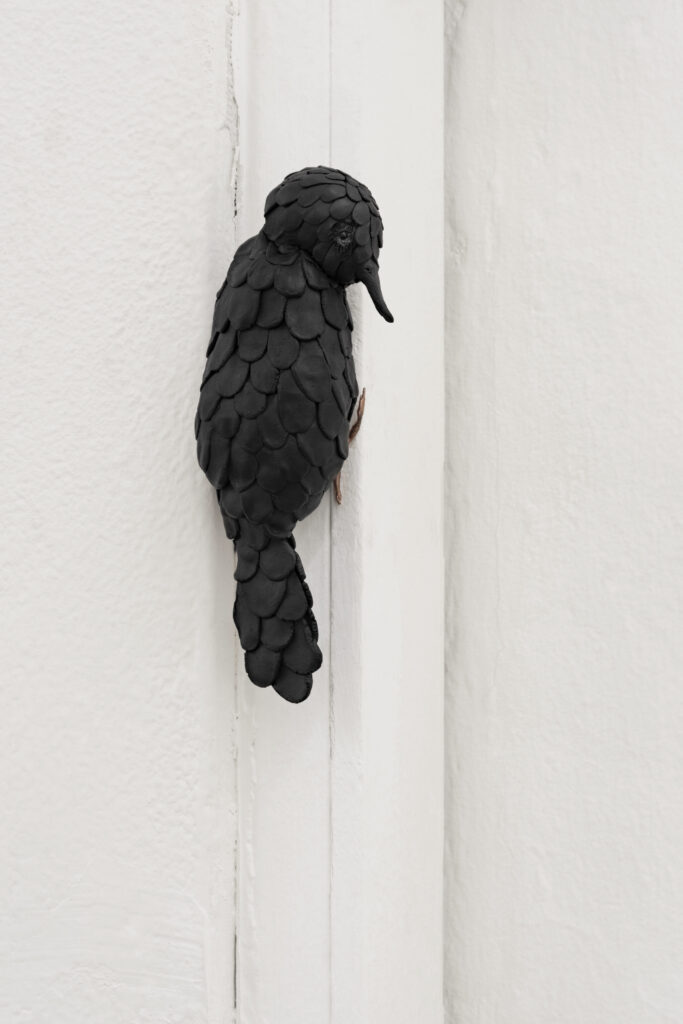 Elizabeth JaegerBird, 2020
Elizabeth JaegerBird, 2020
Ceramic, copper, epoxy clay
20x7,5x6,5cm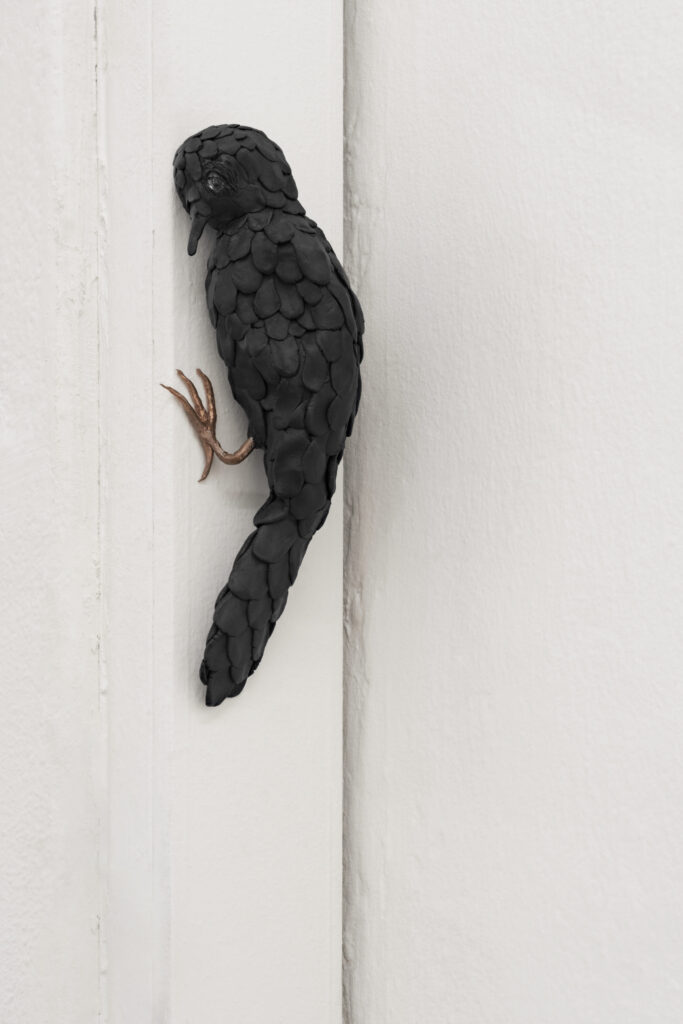 Elizabeth JaegerBird, 2020
Elizabeth JaegerBird, 2020
Ceramic, copper, epoxy clay
26,5x10x 6,5cm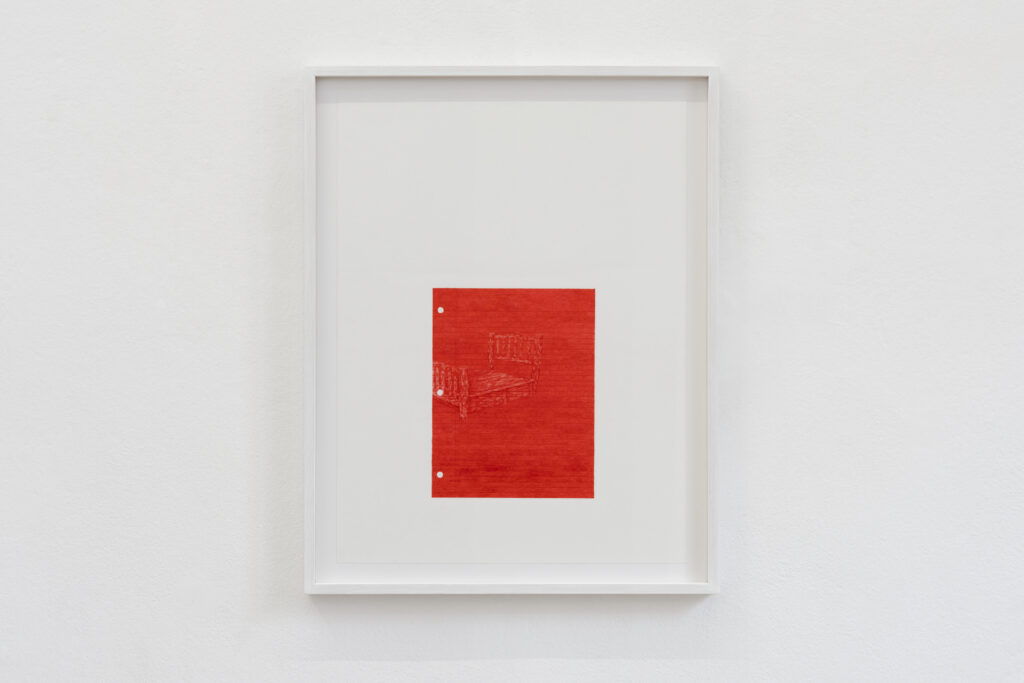 Fin SimonettiBedframe, 2020
Fin SimonettiBedframe, 2020
Ink pen on paper
56x71cm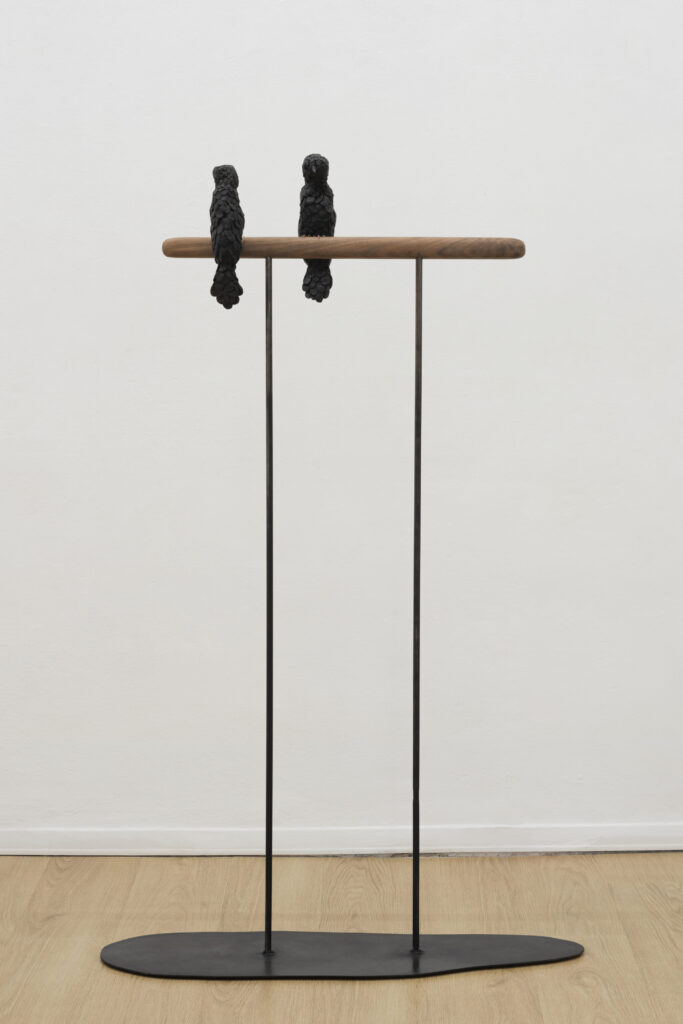 Elizabeth JaegerBird, 2020
Elizabeth JaegerBird, 2020
Ceramic, copper, epoxy clay, hand carved wooden dowel, iron
150 x 90 x 18cm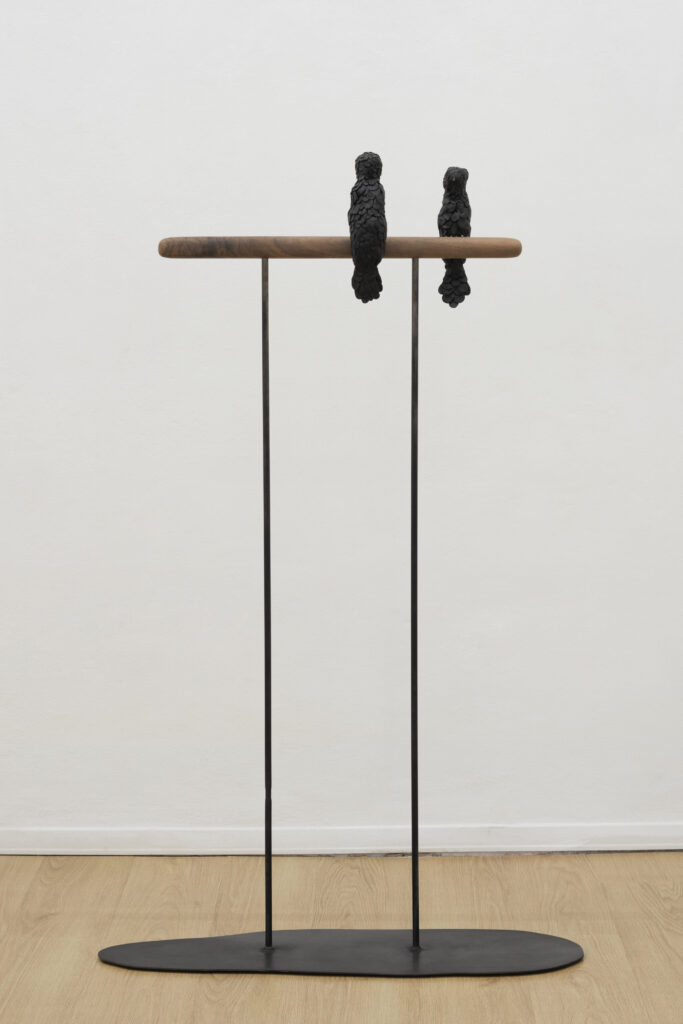 Elizabeth JaegerBird, 2020
Elizabeth JaegerBird, 2020
Ceramic, copper, epoxy clay, hand carved wooden dowel, iron
150 x 90 x 18cm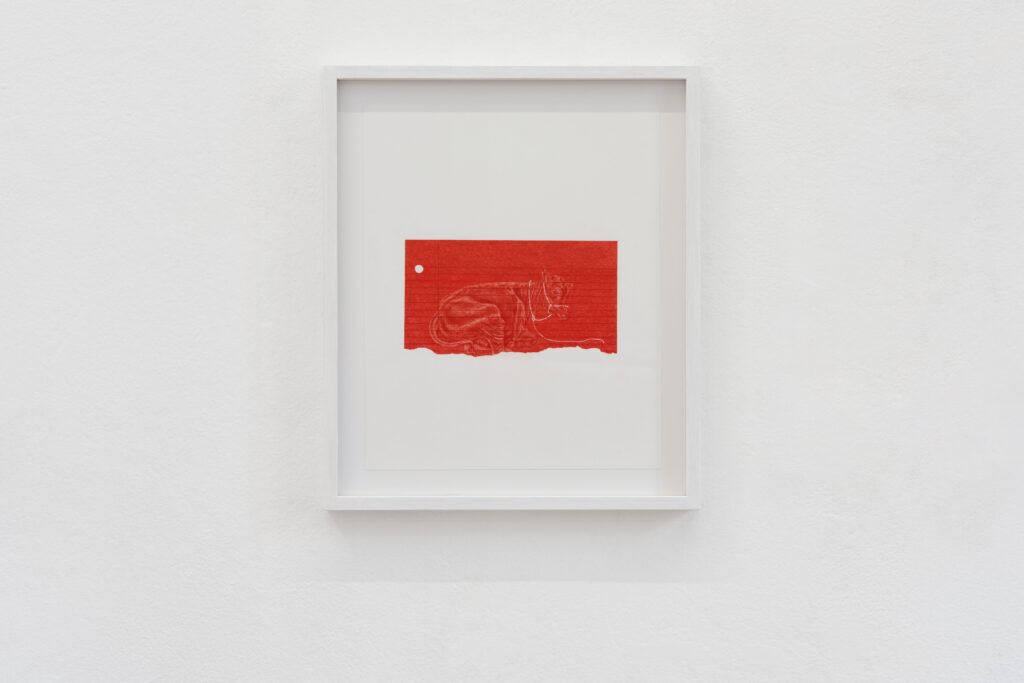 Fin SimonettiRope, 2020
Fin SimonettiRope, 2020
Ink pen on paper
33 x 45,7cm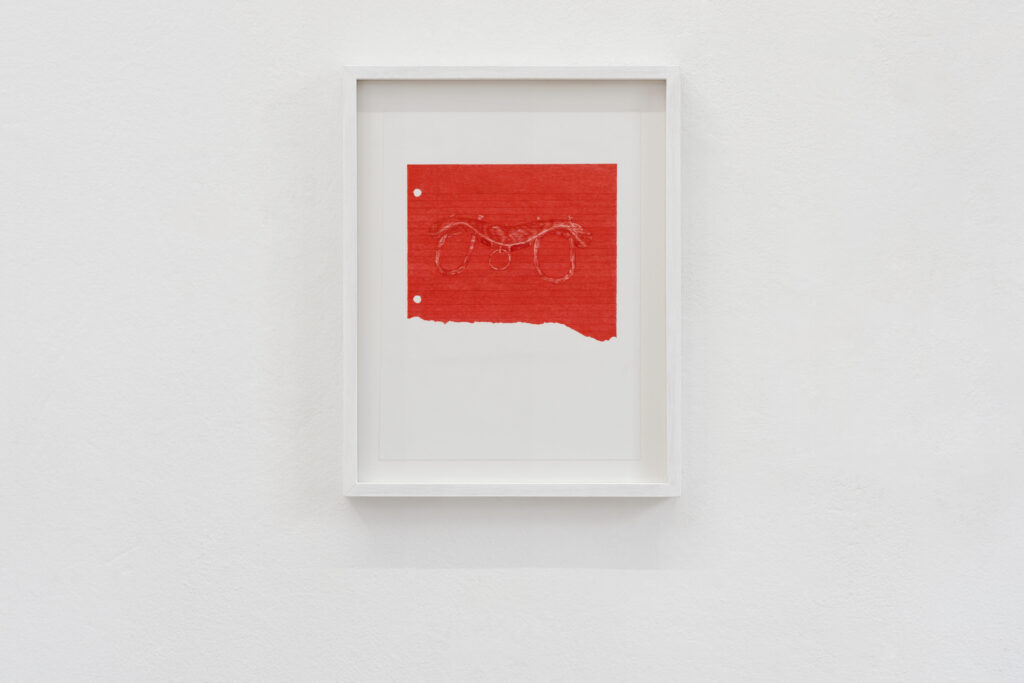 Fin SimonettiYoke, 2020
Fin SimonettiYoke, 2020
Ink pen on paper
33 x 45,7cm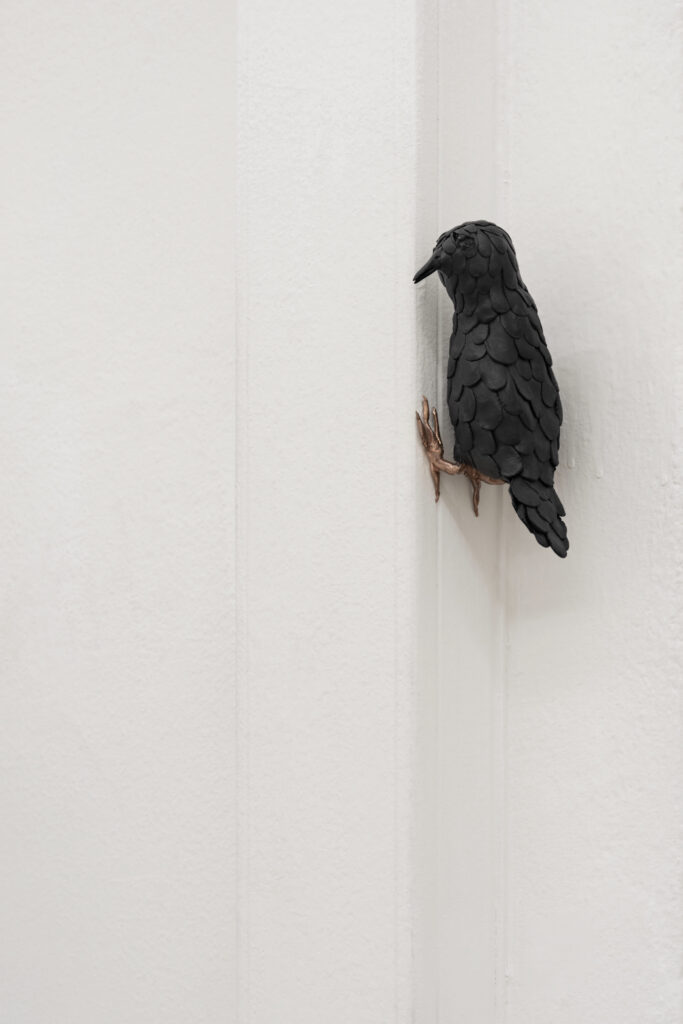 Elizabeth JaegerBird, 2020
Elizabeth JaegerBird, 2020
Ceramic, copper, epoxy clay
15 x 6,5 x 6,5cm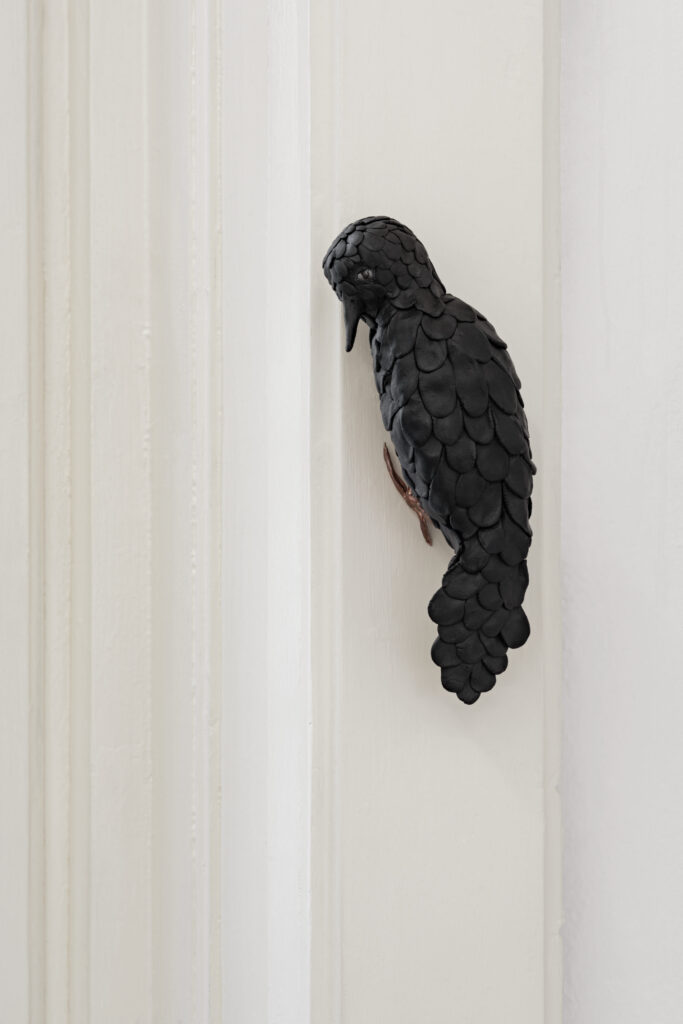 Elizabeth JaegerBird, 2020
Elizabeth JaegerBird, 2020
Ceramic, copper, epoxy clay
24 x 7,6 x 10cm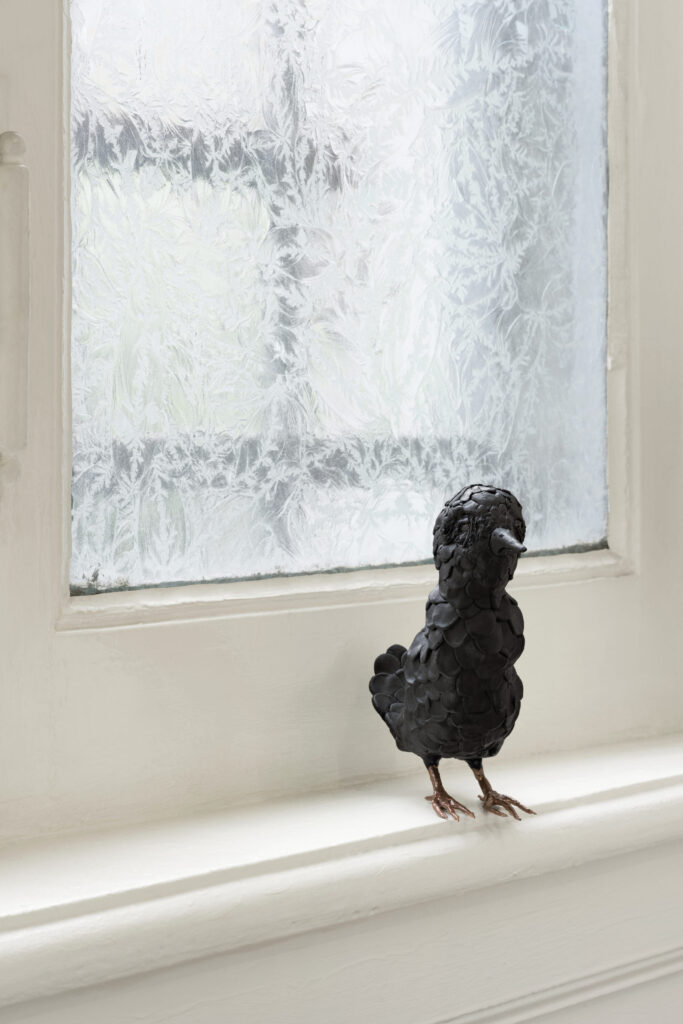 Elizabeth JaegerBird, 2020
Elizabeth JaegerBird, 2020
Ceramic, copper, epoxy clay
16,5 x 19 x 6,35cm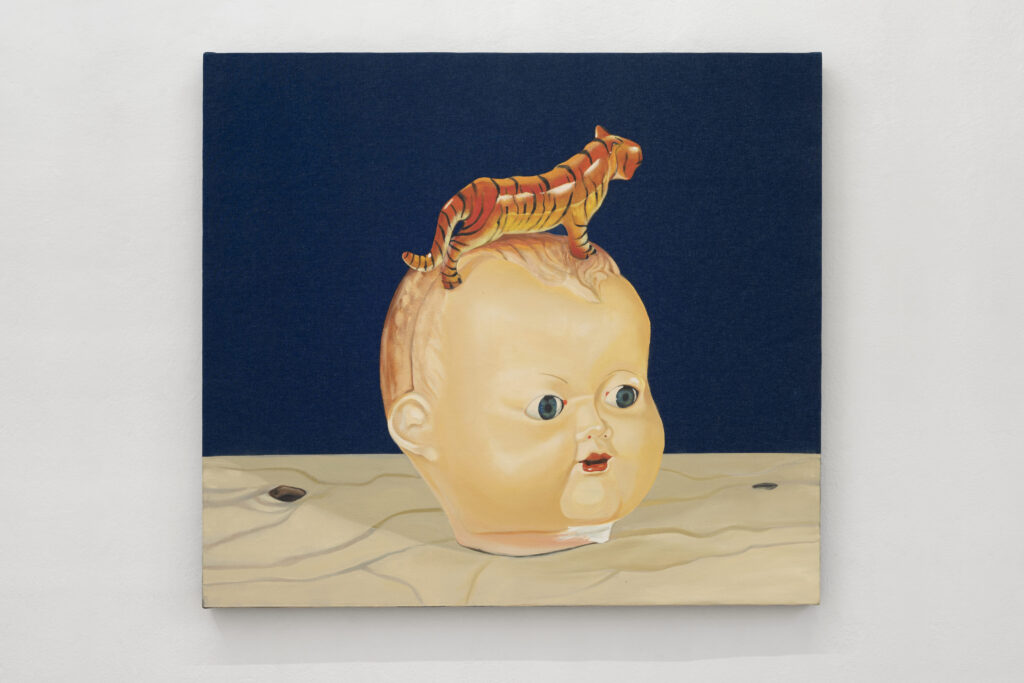 Dalton GataCon El Tigre En La Cabeza, 2019
Dalton GataCon El Tigre En La Cabeza, 2019
Acrylic on denim
114 x 127.5cm Elizabeth JaegerBird, 2020
Elizabeth JaegerBird, 2020
Ceramic, copper, epoxy clay
12,7 x 5 x 7cm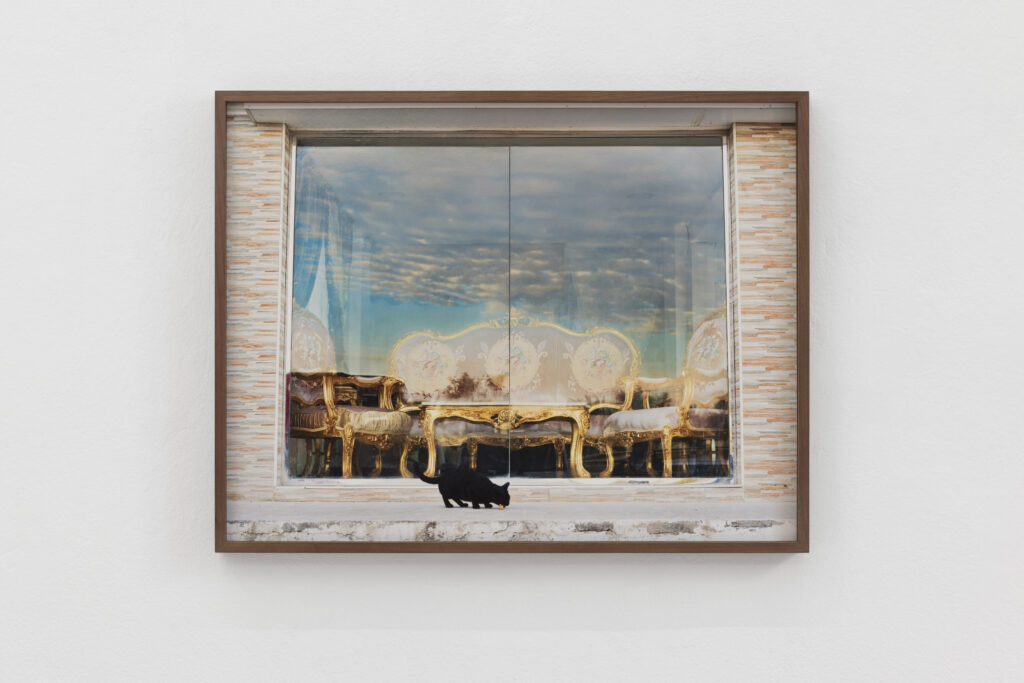 Farah Al QasimiFurniture Market, Stray Cat, 2018
Farah Al QasimiFurniture Market, Stray Cat, 2018
Archival Inkjet print
50,8 x 66 cm
Edition 4 of 5,2AP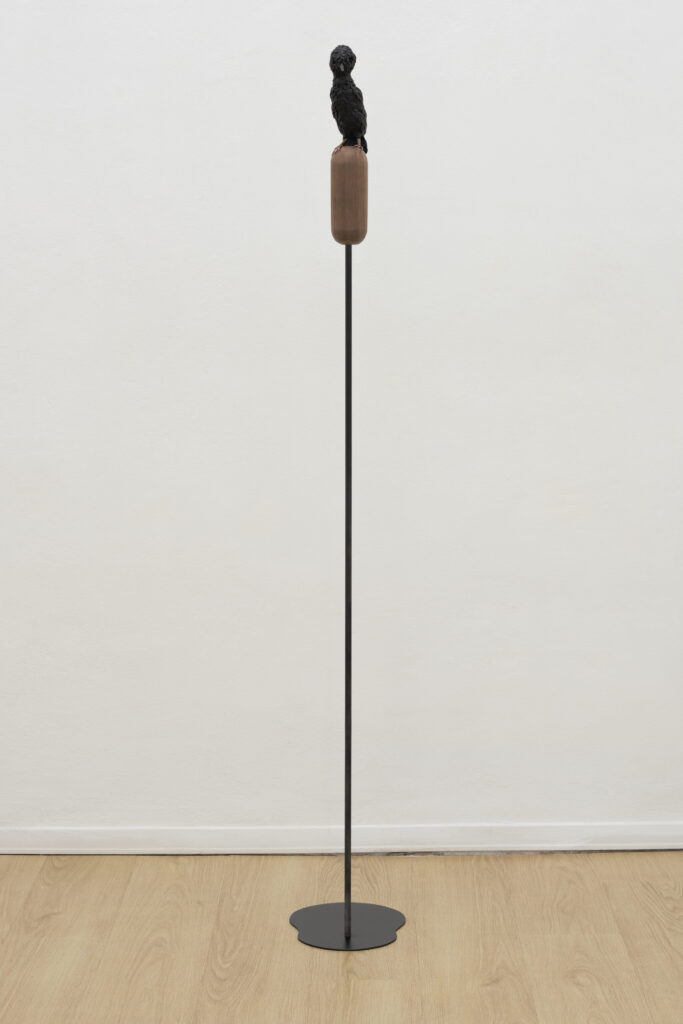 Elizabeth JaegerBird, 2020
Elizabeth JaegerBird, 2020
Ceramic, copper, epoxy clay, hand carved wooden dowel, iron
170 x 49,5 x 42,5cm
Tunji Adeniyi-Jones (b. 1992, London, UK) predominantly works in painting and drawing. He received his BFA in Fine Art from Oxford University, his MFA in Painting/Printmaking from The Yale School of Art, and was a resident of Kehinde Wiley’s Black Rock Senegal. He currently lives and works in New York City.

Farah Al Qasimi (b.1991, Abu Dhabi, United Arab Emirates) works in photography, video, and performance. She received her BA from Yale Uni- versity, her MFA in Photography from the Yale School of Art, and was a resident of the Skowhegan School of Painting and Sculpture. She currently lives and works between Brooklyn and Dubai.

Dalton Gata (b. 1977, Santiago de Cuba, Cuba) works predominantly in painting and drawing. He received a BFA in Fashion Design from the Escuela de Diseño Altos del Chavón in Santo Domingo, DR. He currently lives and works in Coamo, Puerto Rico.

Brook Hsu (b. 1987, Pullman, Washington, raised in Stillwater, Oklahoma) works predominantly in painting and sculpture. She received her BFA from the Kansas City Art Institute and her MFA in Painting/Printmaking from The Yale School of Art. She currently lives and works in New York City.

Elizabeth Jaeger (b. 1988, San Francisco, California) works in sculpture. She received a BA from Lewis and Clark College, Portland, Oregon; has studied at the École Nationale Superieure des Arts, Nancy, France; and studied textiles at the School of The Art Institute of Chicago, Illinois. She currently lives and works in New York City.

Fin Simonetti (b.1985, Vancouver, British Columbia, Canada) works in sculpture, stained glass, and drawing. She received her BFA from the Ontario College of Art and Design in 2009. She currently lives and works in New York City.

